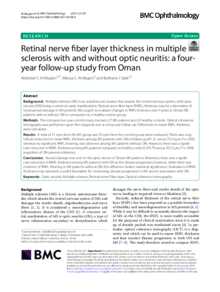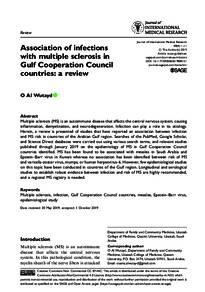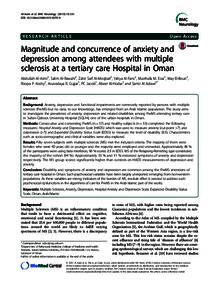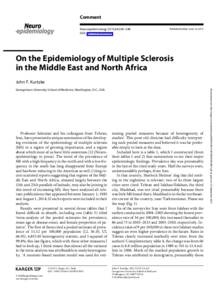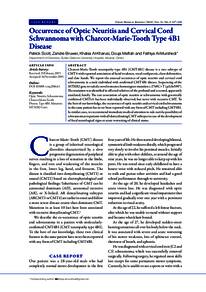Document
Retinal nerve fiber layer thickness in multiple sclerosis with and without optic neuritis : a four-year follow-up study from Oman.
Identifier
DOI: 10.1186/s12886-021-02158-0
Source
BMC Ophthalmology. v. 21, 1, 391
Contributors
Al‑Mujainiyah, Maiysa S. , Author
Sabt, Buthaina I. , Author
Country
United Kingdom.
City
London
Publisher
BioMed Central Ltd.
Gregorian
2021-12-01
Language
English
English abstract
Background: Multiple sclerosis (MS) is an autoimmune disease that attacks the central nervous system, with optic neuritis (ON) being a common early manifestation. Retinal nerve fiber layer (RNFL) thickness may be a biomarker of neuroaxonal damage in MS patients. We sought to evaluate changes in RNFL thickness over 4 years in Omani MS patients with or without ON in comparison to a healthy control group. Methods: This retrospective case-control study involved 27 MS patients and 25 healthy controls. Optical coherence tomography was performed upon first diagnosis and at a four-year follow-up. Differences in mean RNFL thickness were calculated. Results: A total of 51 eyes from the MS group and 50 eyes from the control group were evaluated. There was a significant reduction in mean RNFL thickness among MS patients with ON at follow-up (81.21 versus 72.14 μm; P =.003), whereas no significant RNFL thinning was observed among MS patients without ON. However, there was a significant reduction in RNFL thickness among MS patients compared to healthy controls (76.79 versus 93.72 μm; P =.009), regardless of ON presence/absence. Conclusions: Axonal damage was seen in the optic nerves of Omani MS patients. Moreover, there was a significant reduction in RNFL thickness among MS patients with ON as the disease progressed; however, while there was evidence of RNFL thinning in MS patients without ON, this difference lacked statistical significance. Evaluation of RNFL thickness may represent a useful biomarker for monitoring disease progression in MS and its association with ON.
ISSN
1471-2415
Category
Journal articles

